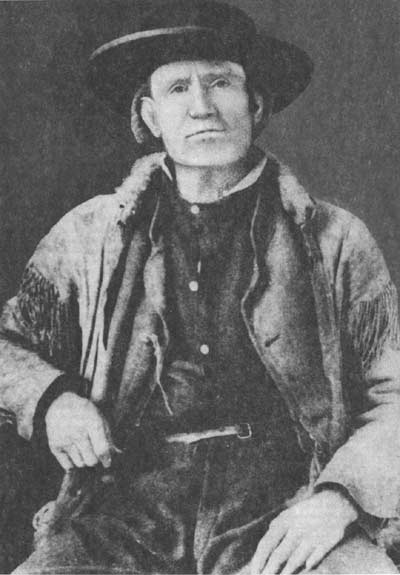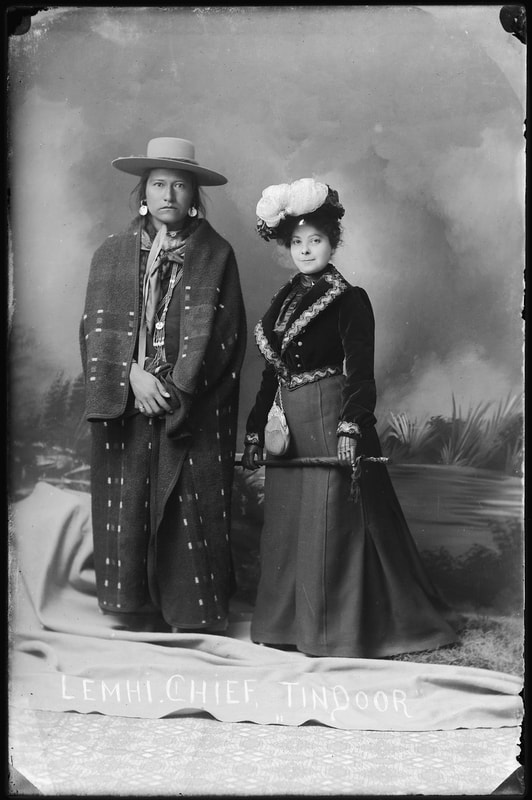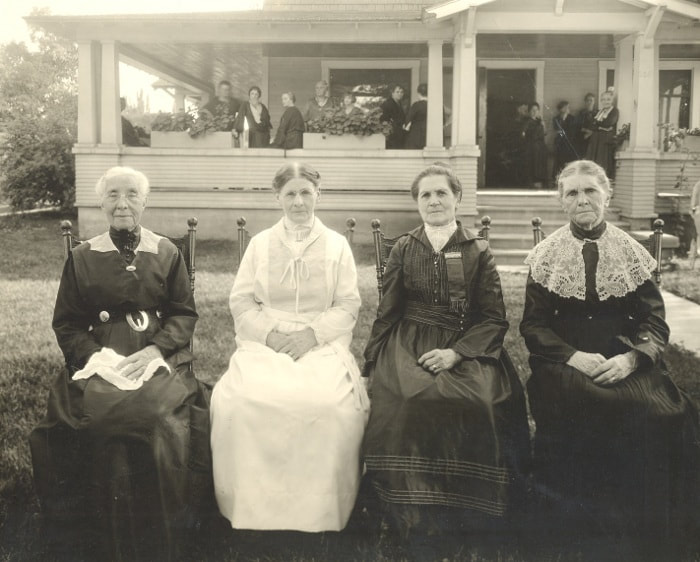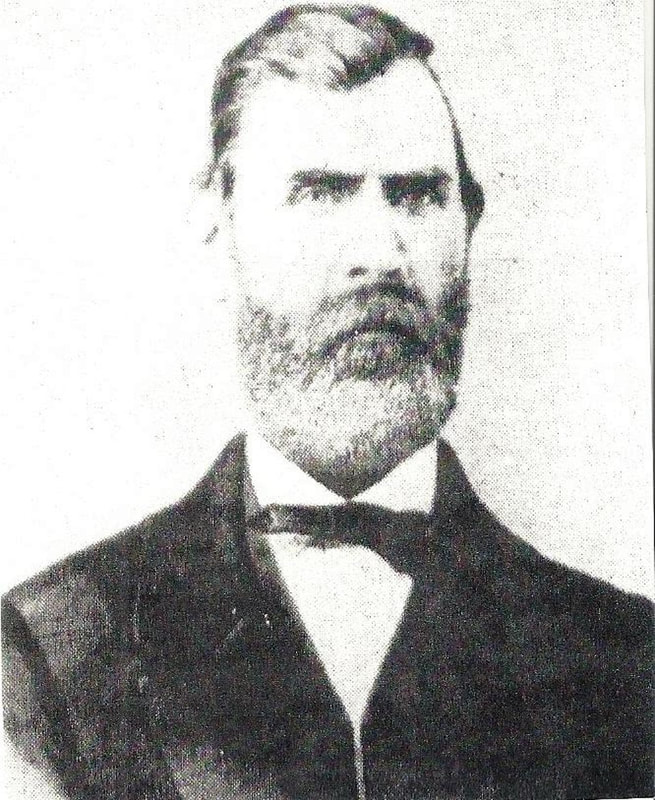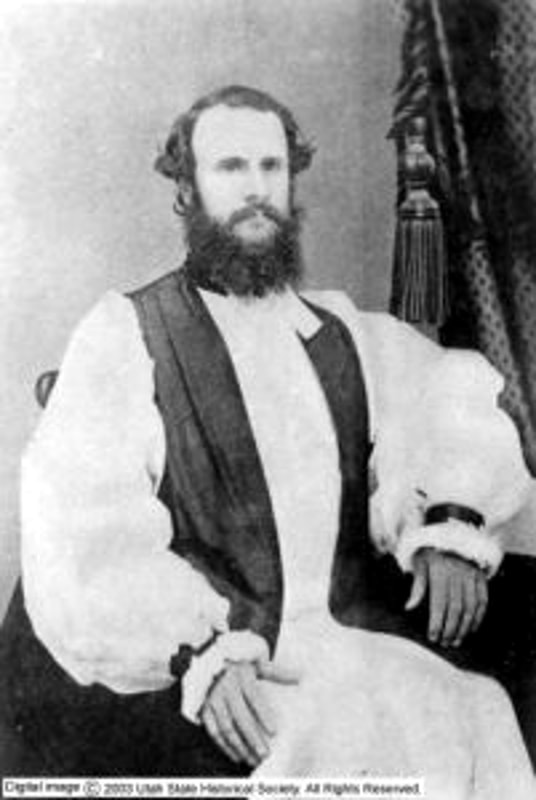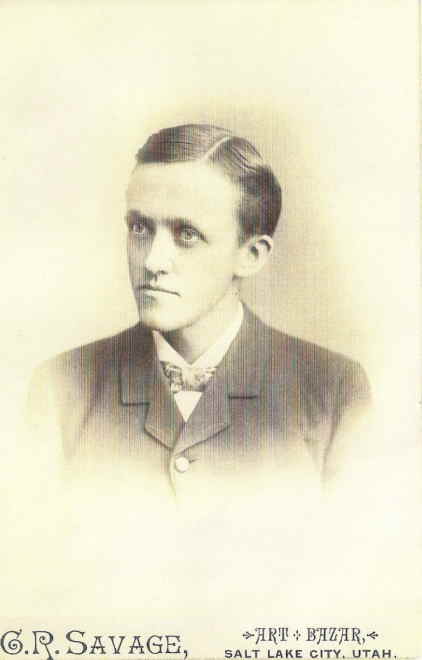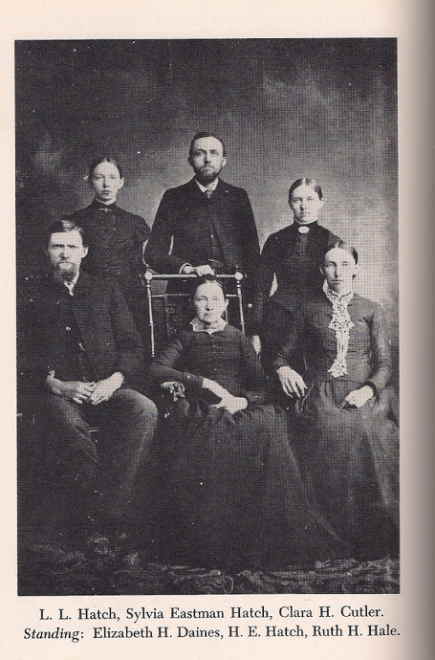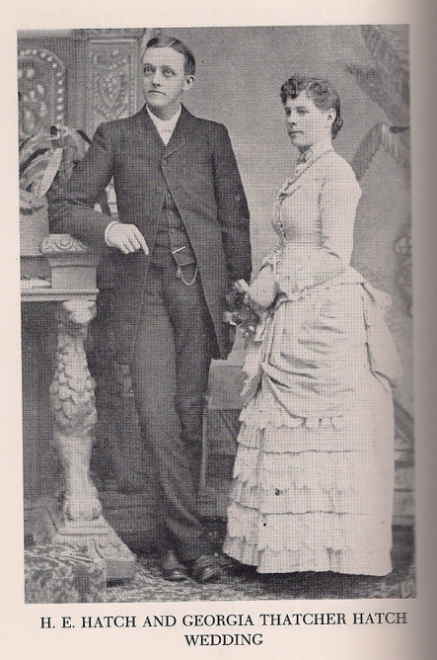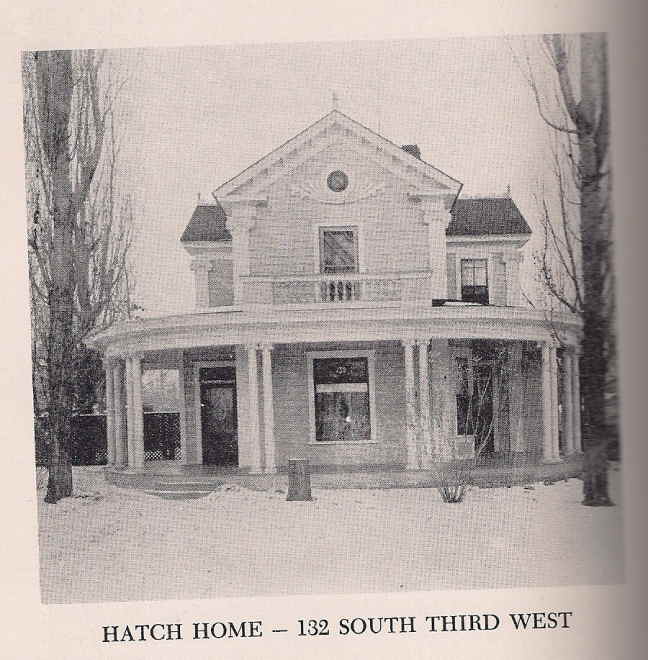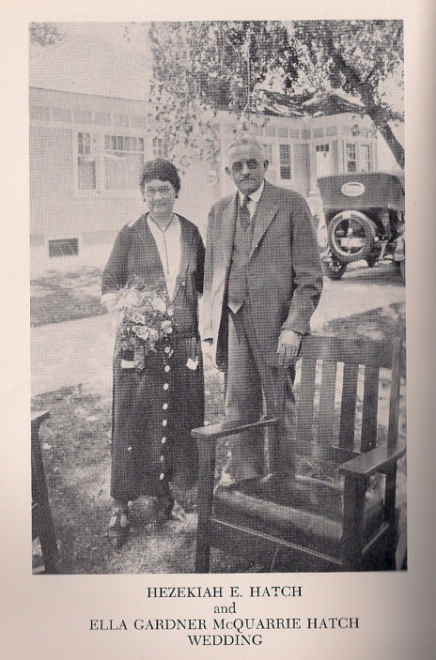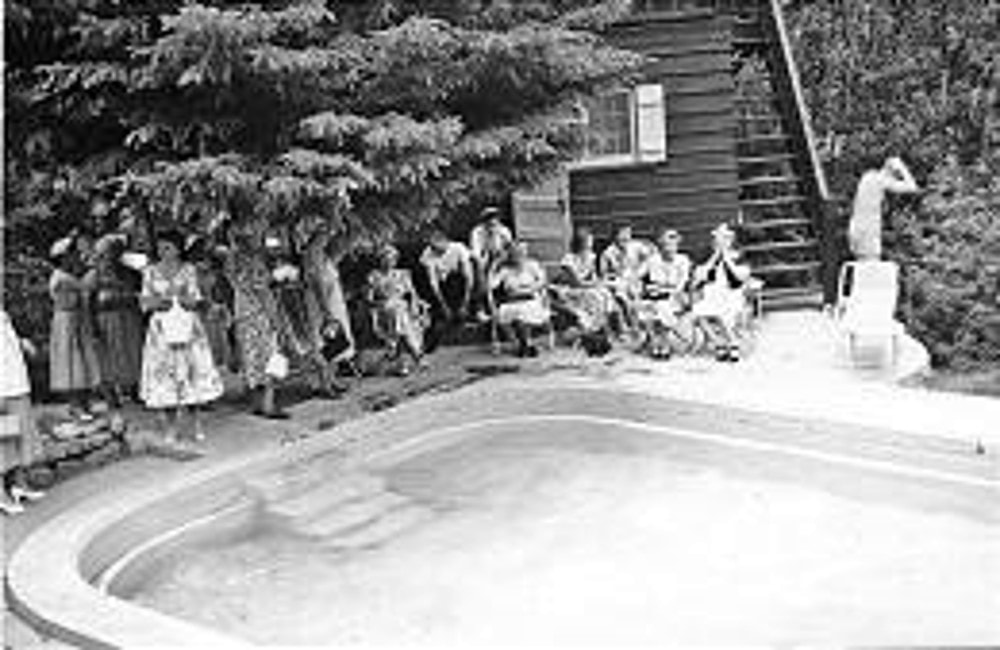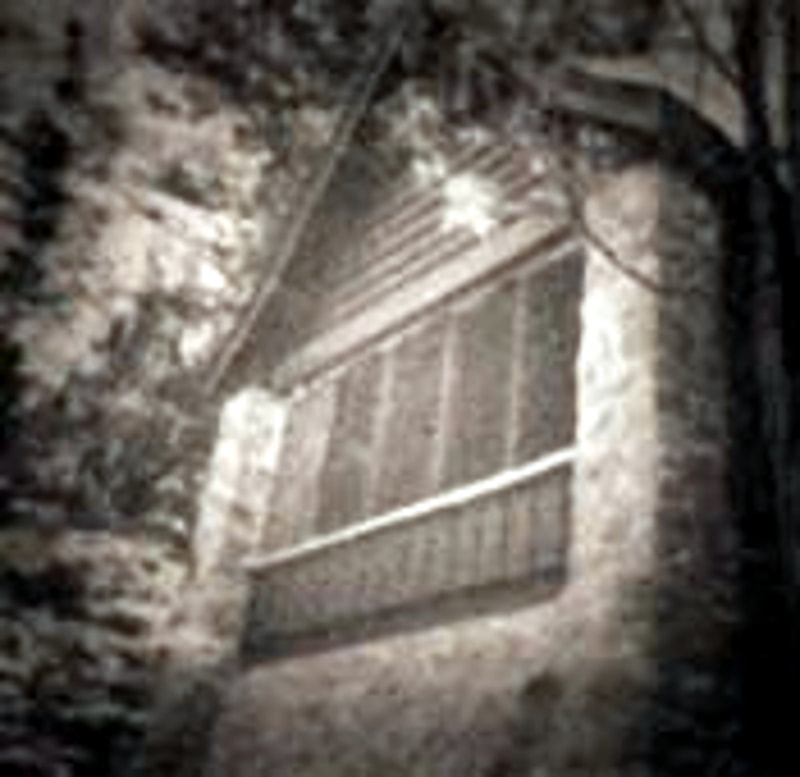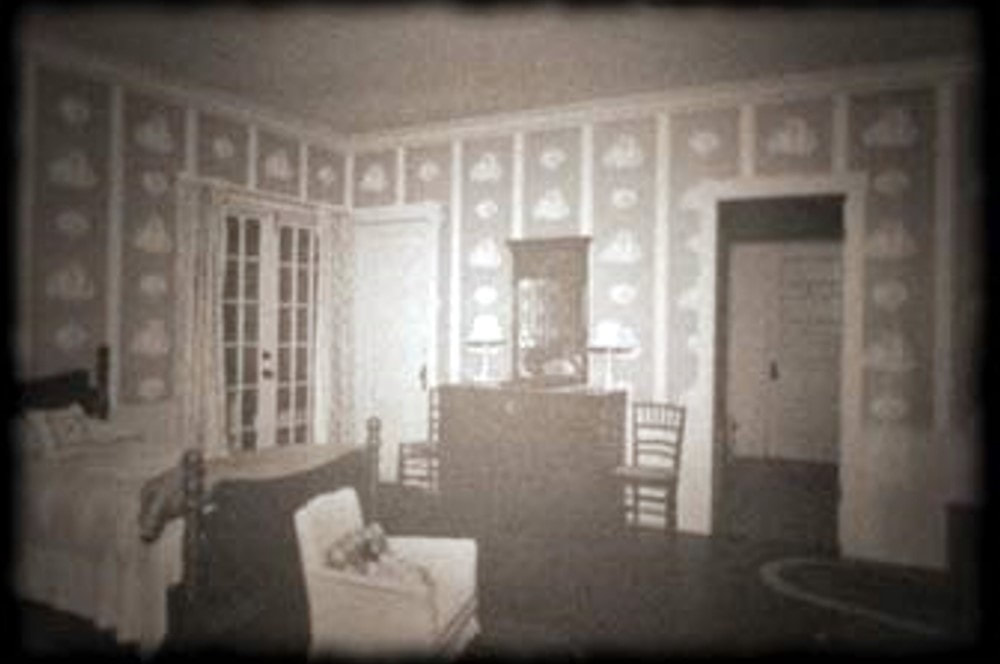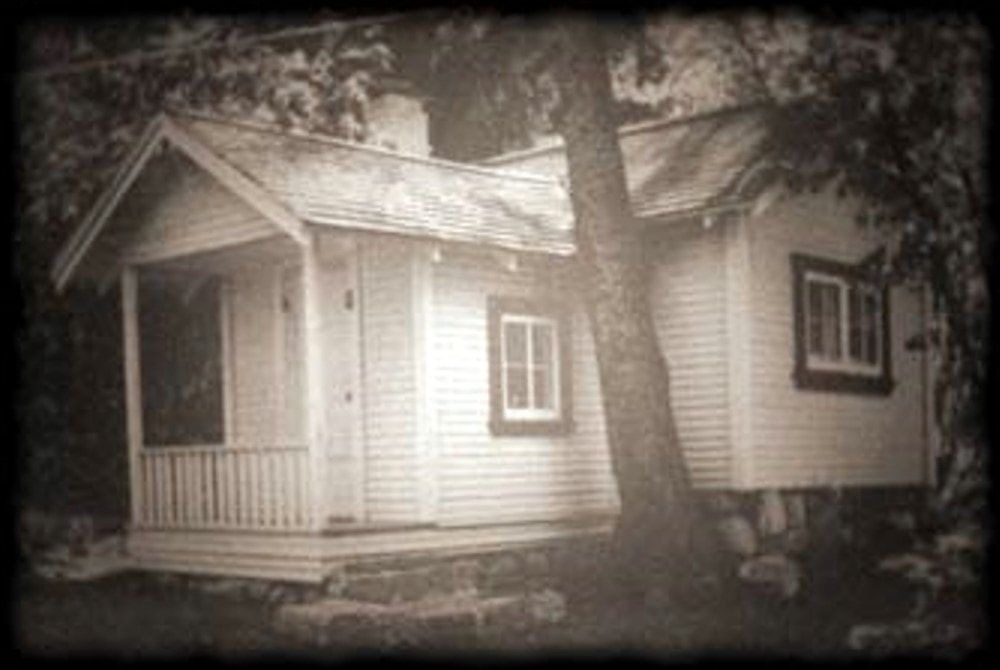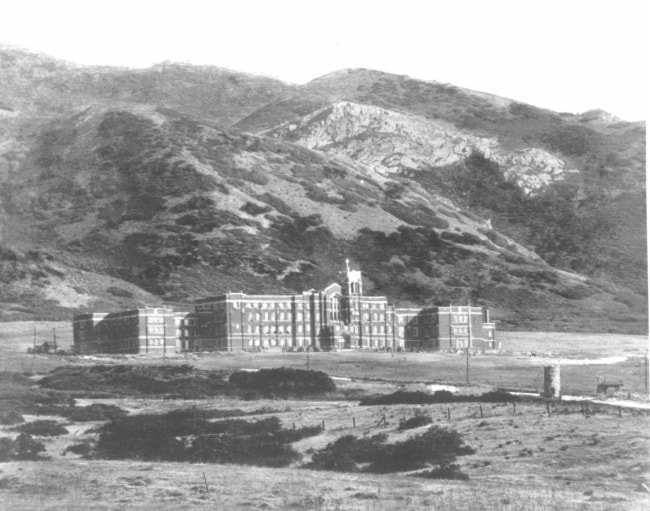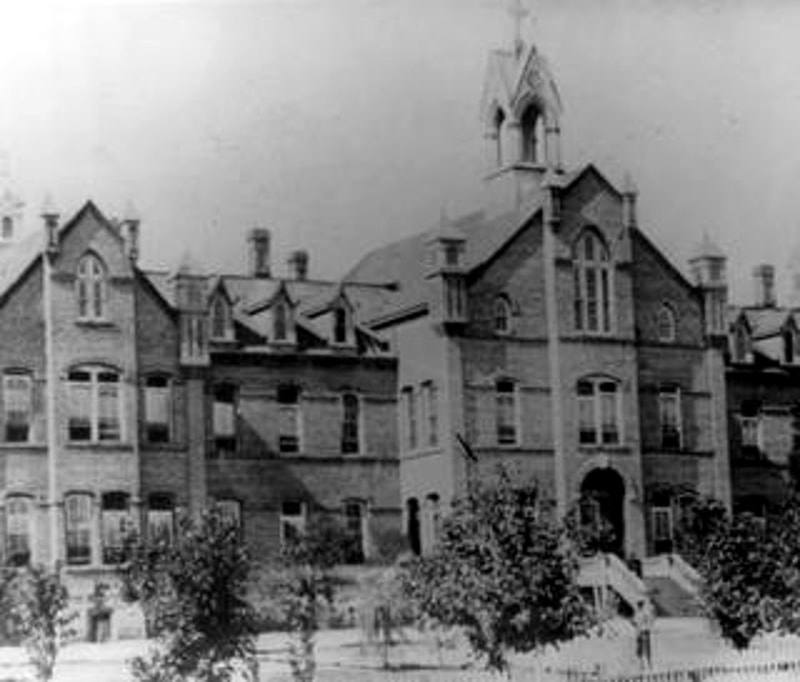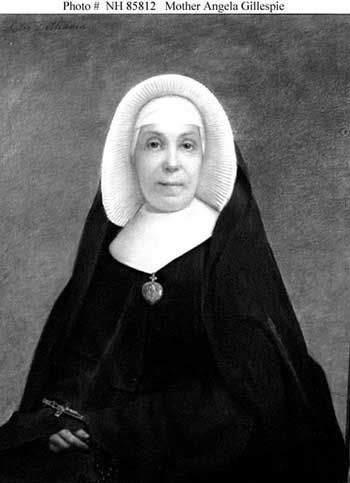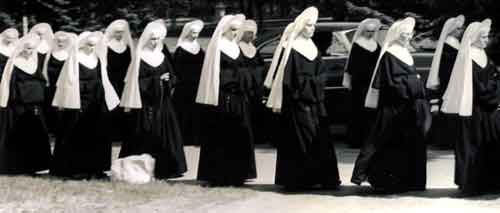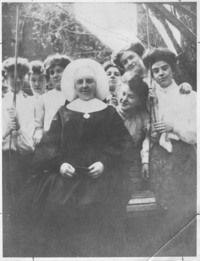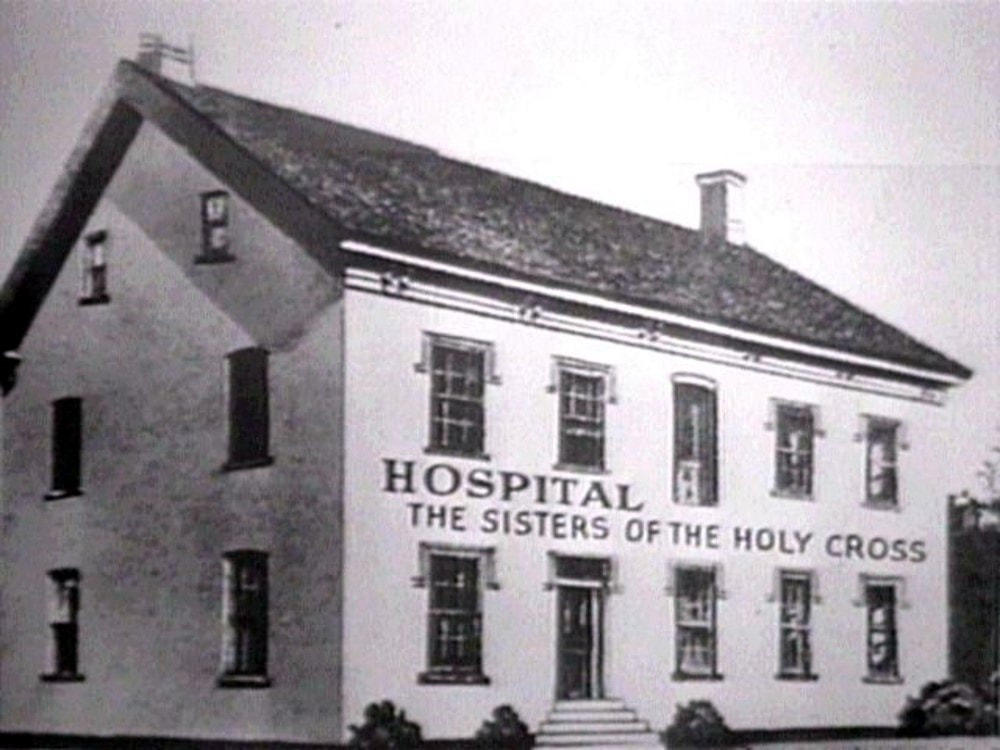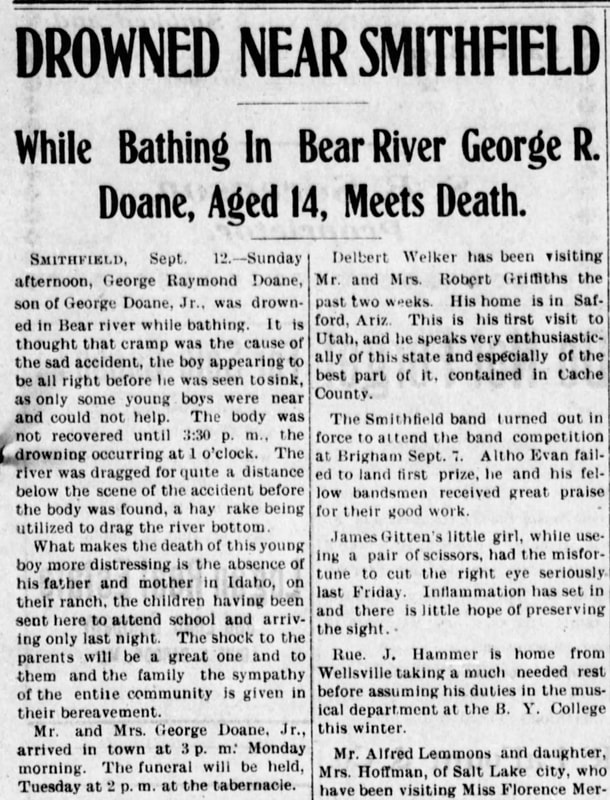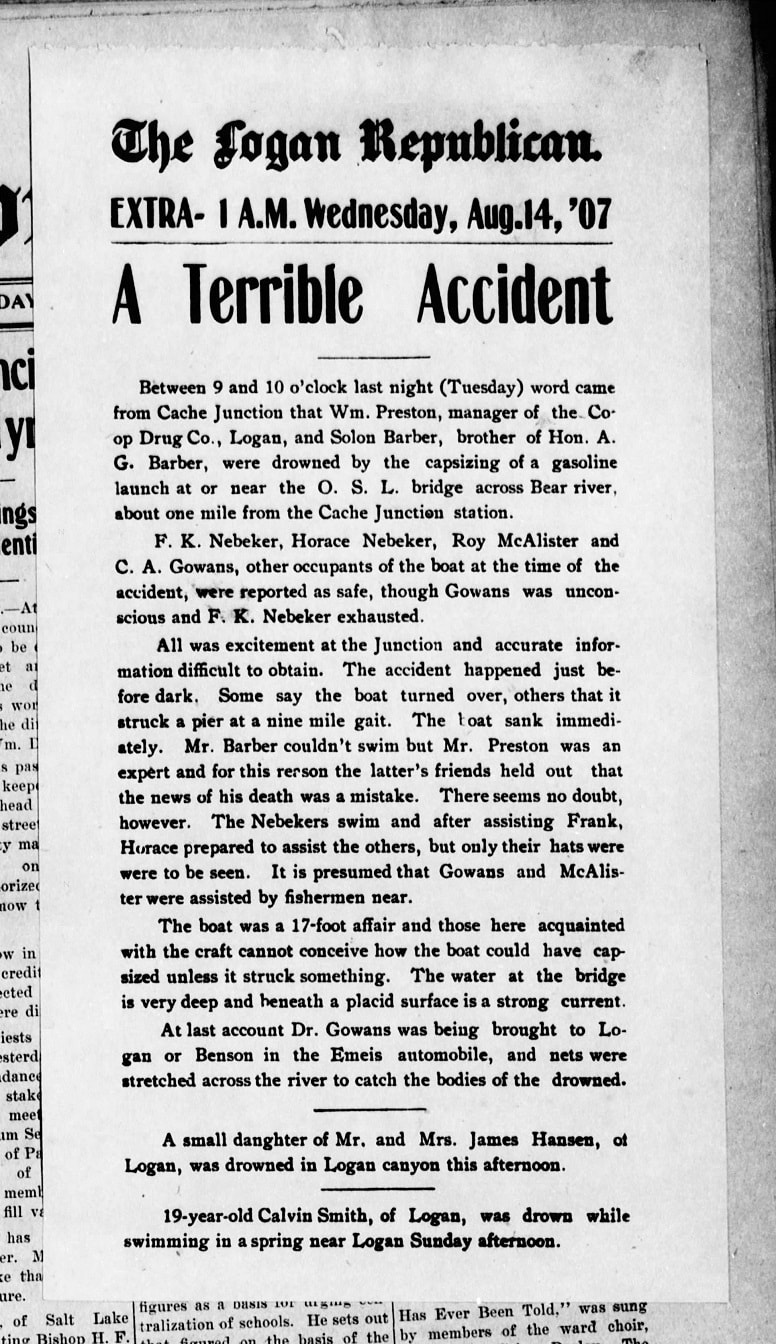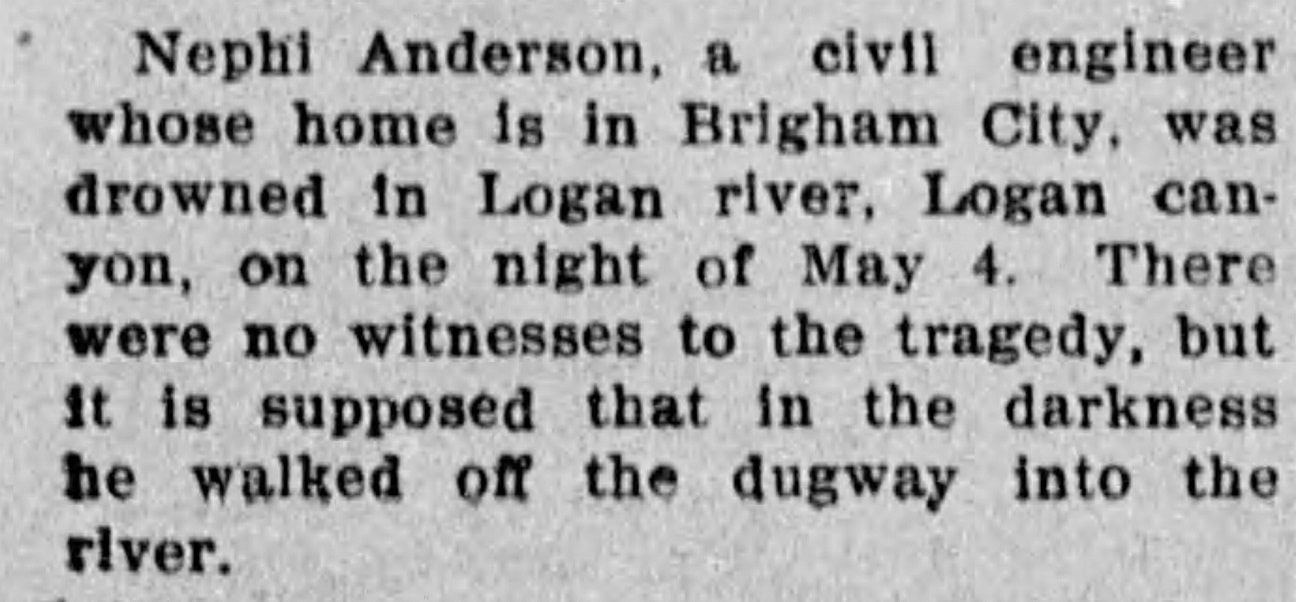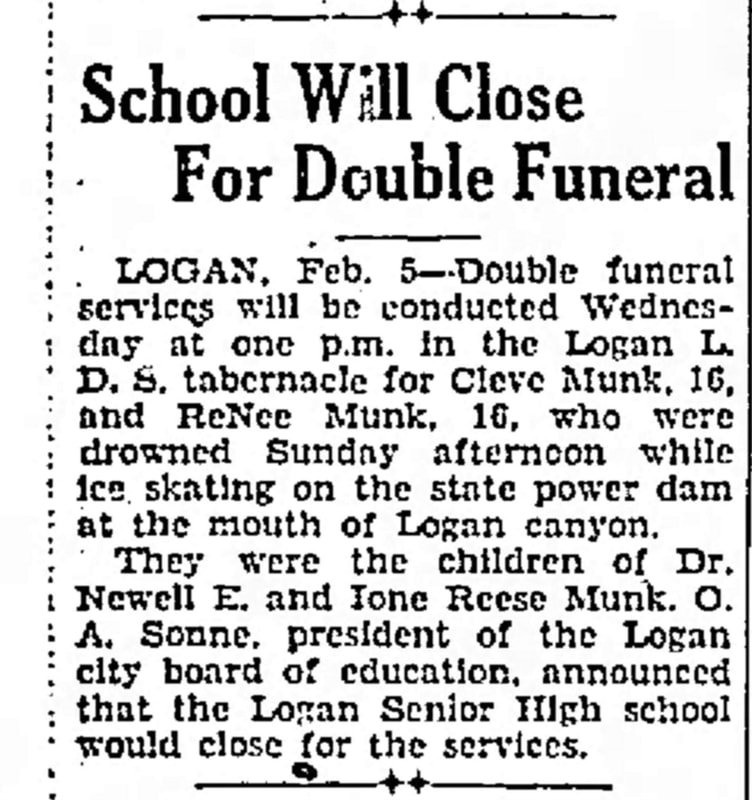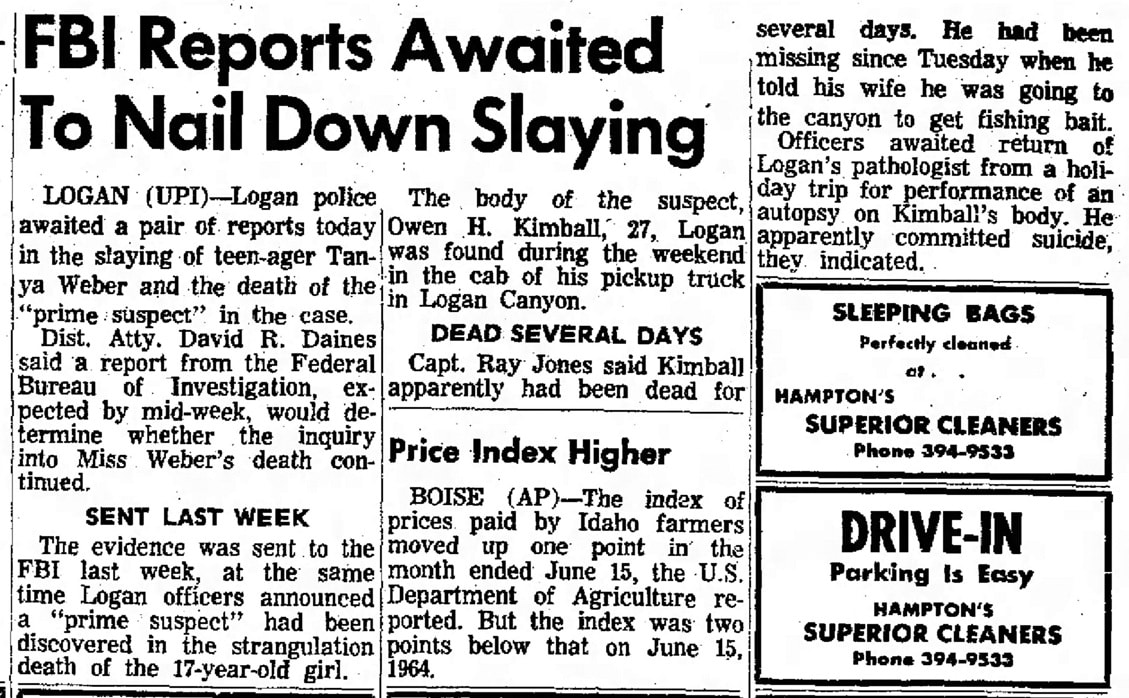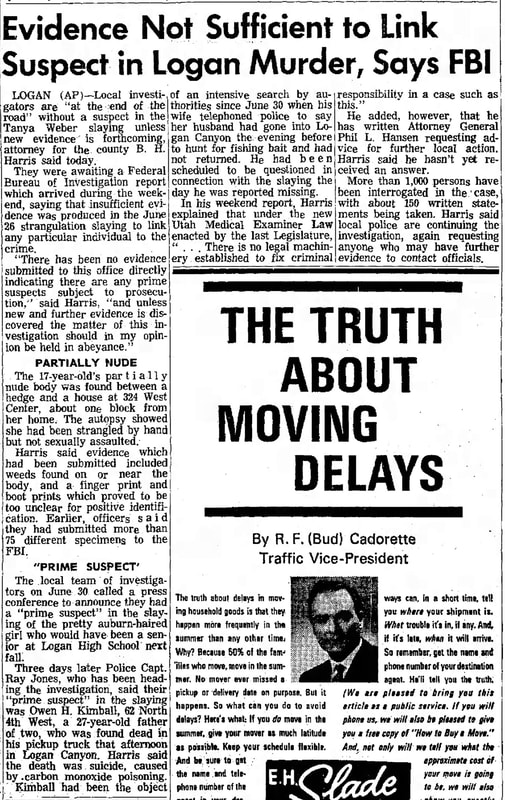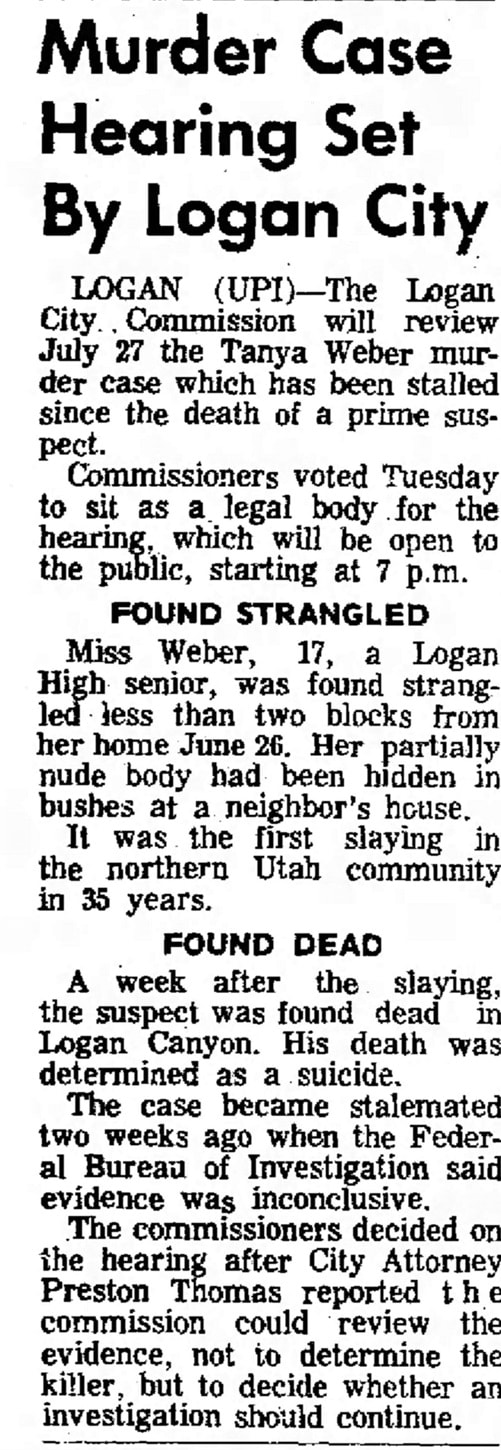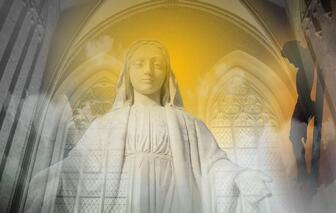The Legend of St. Ann's Retreat
Logan Canyon, Utah
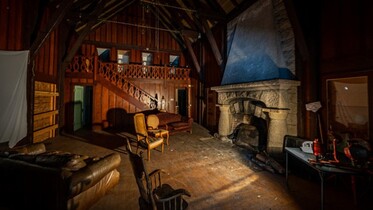 Throughout the years this site has been known by many names such as: Hatch's Camp, Preston Valley Campground, Pine Glenn Cove (Forest Hills according to the forest service lease), St. Ann's Retreat and the Nunnery.
Throughout the years this site has been known by many names such as: Hatch's Camp, Preston Valley Campground, Pine Glenn Cove (Forest Hills according to the forest service lease), St. Ann's Retreat and the Nunnery.
Throughout the years this site has been known by many names such as: Hatch's Camp, Preston Valley Campground, Pine Glenn Cove (Forest Hills according to the forest service lease), St. Ann's Retreat and the Nunnery.
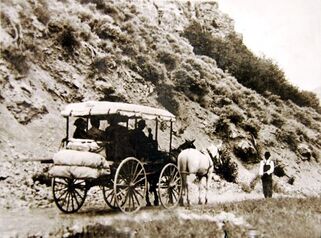 Logan Canyon. White topped wagon in Logan Canyon on its way to Bear Lake on the old wagon road. Source: Ray Somers Photo Collection
Logan Canyon. White topped wagon in Logan Canyon on its way to Bear Lake on the old wagon road. Source: Ray Somers Photo Collection
Originally this site was called Hatch’s Camp or Pine Glenn Cove. It wasn’t referred to as St. Ann’s Retreat until after 1959, when the Sisters of the Holy Cross would come to the camp for respite. Due to the presence of the sisters, it came to be called the Nunnery as well, and throughout the years different stories have abounded how the ghosts of nuns roam the ground, but the truth be told there are much more likely candidates that might walk the paths of the now derelict campsite inside Cache National Forest.
You would be surprised how many other more plausible sources for the haunting are present, especially in an area which is adjacent to U.S. 89 which for years has seen horrific accidents, ending lives under violent and sudden circumstances, which is one of the main ingredients identified as the trigger for a haunting.
The initial and most important step in investigating stories about a haunting or an urban myth, is to go back to the when humans started inhabiting the area, bringing with them their drama, dark deeds which many times ended in murder.
Any historian will tell you that despite the golden patina of yesteryear memories, people committed horrible acts to others and themselves, leaving heartbreak and unanswered questions in their wake. Midnight burials in unhallowed ground, kept killers safe and victims rotted in secret graves, never receiving justice or resolution. Families or communities when faced with scandal, did not want to be tainted with the event and would hide them, and just not talk about it anymore.
Most paranormal investigators eventually encounter stories of injustice and hidden truths, and identify them as the catalyst for full-blown intelligent hauntings.
So let’s go back to the beginning.
You would be surprised how many other more plausible sources for the haunting are present, especially in an area which is adjacent to U.S. 89 which for years has seen horrific accidents, ending lives under violent and sudden circumstances, which is one of the main ingredients identified as the trigger for a haunting.
The initial and most important step in investigating stories about a haunting or an urban myth, is to go back to the when humans started inhabiting the area, bringing with them their drama, dark deeds which many times ended in murder.
Any historian will tell you that despite the golden patina of yesteryear memories, people committed horrible acts to others and themselves, leaving heartbreak and unanswered questions in their wake. Midnight burials in unhallowed ground, kept killers safe and victims rotted in secret graves, never receiving justice or resolution. Families or communities when faced with scandal, did not want to be tainted with the event and would hide them, and just not talk about it anymore.
Most paranormal investigators eventually encounter stories of injustice and hidden truths, and identify them as the catalyst for full-blown intelligent hauntings.
So let’s go back to the beginning.
History
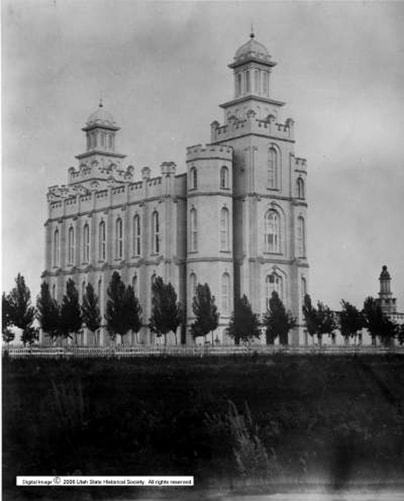 Logan LDS Temple c.1884
Logan LDS Temple c.1884
On June 6, 1859, a small group of Mormon settlers were sent by Brigham Young to survey a fort site in the area of Cache Valley in northern Utah at the mouth of Logan Canyon. The proposed location of the fort was near the banks of the Logan River. Upon arriving they started to harvest logs for houses, and before long industry grew and Logan eventually became the county seat for Cache County. Two building landmarks of the city are the Logan LDS Tabernacle completed in 1878, and the Logan LDS Temple completed in 1884. One of the founding families of the city was the Thatchers headed by the patriarch, Hezekiah Thatcher.
Prior to this only trappers working for the Rocky Mountain Fur Company ventured into this area. Many had taken Native American wives, however they did not establish any permanent housing in Cache Valley. Jim Bridger a famous trapper who was one of the first to see Great Salt Lake, mistook it for the Pacific Ocean because of its salinity. He saw the possibilities in Cache County for ranching and agriculture.
By 1873, Logan’s population exceeded 2,000, and in that year Rev. Daniel Tuttle organized St. John’s Episcopal Church. Other religious faiths began to settle in Logan, as well as the establishment of institutions for higher education. In 1878, Brigham Young College was established, and in 1890, the Utah State Agricultural College which eventually became Utah State University opened its doors.
Eight miles up from Logan’s Canyon is a boarded up group of buildings sitting on almost 3 acres of land; this is all that’s left of the campsite built in 1910 by prominent Logan businessman Hezekiah Eastman Hatch, who built a few cabins after obtaining a permit from the forest service. He named the summer retreat Hatch’s Camp or Pine Glenn Cove. Mr. Hatch passed away in 1928, and the property passed to son Lorenzo Boyd Hatch, who shared the site with his brother-in-law Floyd B. Odlum.
Prior to this only trappers working for the Rocky Mountain Fur Company ventured into this area. Many had taken Native American wives, however they did not establish any permanent housing in Cache Valley. Jim Bridger a famous trapper who was one of the first to see Great Salt Lake, mistook it for the Pacific Ocean because of its salinity. He saw the possibilities in Cache County for ranching and agriculture.
By 1873, Logan’s population exceeded 2,000, and in that year Rev. Daniel Tuttle organized St. John’s Episcopal Church. Other religious faiths began to settle in Logan, as well as the establishment of institutions for higher education. In 1878, Brigham Young College was established, and in 1890, the Utah State Agricultural College which eventually became Utah State University opened its doors.
Eight miles up from Logan’s Canyon is a boarded up group of buildings sitting on almost 3 acres of land; this is all that’s left of the campsite built in 1910 by prominent Logan businessman Hezekiah Eastman Hatch, who built a few cabins after obtaining a permit from the forest service. He named the summer retreat Hatch’s Camp or Pine Glenn Cove. Mr. Hatch passed away in 1928, and the property passed to son Lorenzo Boyd Hatch, who shared the site with his brother-in-law Floyd B. Odlum.
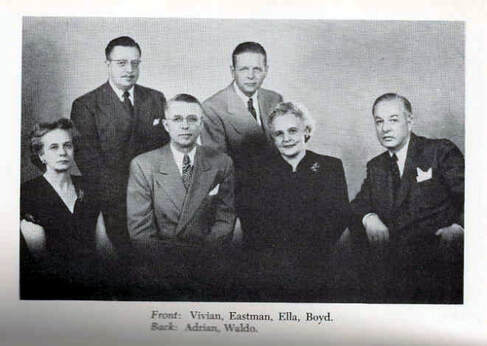 Members of the Hatch family c.1930s
Members of the Hatch family c.1930s
The families who by 1933, were considered one of the wealthiest in the United States, owning companies such as RKO Studios, Paramount Pictures and many other business interests, continued to summer at Hatch Camp even though they had already moved to New York in 1921. They continued to add buildings to accommodate the family as well as friends and acquaintances who were invited to spend time there. Many Hollywood directors, movie stars, CEOs and noteworthy politicians spent their summers with the families.
By 1951, the family no longer used the retreat and they offered it first to The Church of Jesus Christ of Latter-day Saints and then to Utah State University, but neither entity was interested. It was then offered to the Catholic Church through St. Thomas Aquinas Parish in Logan who renamed it St. Ann’s Retreat. The Catholic Church took possession of the property in 1959, and nuns occupied it sporadically which is why it was not considered a convent or nunnery. The Sisters of the Holy Cross used it only as a religious retreat or vacation place. No additional buildings were added by the church with the exception of a statue of the Virgin Mary next to a pond on the property.
The Sisters of the Holy Cross arrived in Utah on June 6, 1875, and three months later opened St. Mary's Academy. A month after that, they had set up Holy Cross Hospital in Salt Lake City with 12 beds.
Because it was not in continuous use, there was ample opportunity for vandals to visit, even on nights when the sisters were present. This prompted the nuns to get watch dogs to alert them to the presence of intruders. The sisters felt unsafe with the increase of the sometimes intoxicated young trespassers and vandals, and stopped coming to the retreat. No doubt the Church concluded that it was dangerous for the nuns to stay there even if it was for such a short time. Once the sisters stopped using it, a youth camp made use of the grounds until 1987. The Church closed it permanently due to the extreme vandalism and trespassing, and by then the buildings were in need of repair as well. The Catholic Church eventually sold the lease in 1993, and the site has been under private ownership ever since.
By 1951, the family no longer used the retreat and they offered it first to The Church of Jesus Christ of Latter-day Saints and then to Utah State University, but neither entity was interested. It was then offered to the Catholic Church through St. Thomas Aquinas Parish in Logan who renamed it St. Ann’s Retreat. The Catholic Church took possession of the property in 1959, and nuns occupied it sporadically which is why it was not considered a convent or nunnery. The Sisters of the Holy Cross used it only as a religious retreat or vacation place. No additional buildings were added by the church with the exception of a statue of the Virgin Mary next to a pond on the property.
The Sisters of the Holy Cross arrived in Utah on June 6, 1875, and three months later opened St. Mary's Academy. A month after that, they had set up Holy Cross Hospital in Salt Lake City with 12 beds.
Because it was not in continuous use, there was ample opportunity for vandals to visit, even on nights when the sisters were present. This prompted the nuns to get watch dogs to alert them to the presence of intruders. The sisters felt unsafe with the increase of the sometimes intoxicated young trespassers and vandals, and stopped coming to the retreat. No doubt the Church concluded that it was dangerous for the nuns to stay there even if it was for such a short time. Once the sisters stopped using it, a youth camp made use of the grounds until 1987. The Church closed it permanently due to the extreme vandalism and trespassing, and by then the buildings were in need of repair as well. The Catholic Church eventually sold the lease in 1993, and the site has been under private ownership ever since.
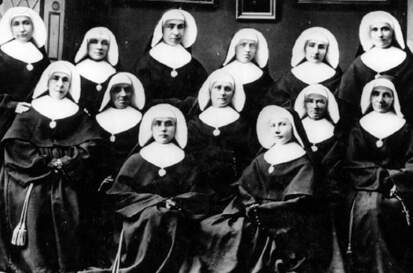 Sisters of the Holy Cross c.1900
Sisters of the Holy Cross c.1900
It was only after the Catholic Church took over the property that rumors started to circulate about an infant drowning in the swimming pool. It was not a stretch to expand the story to introduce a nun's secret pregnancy to explain the existence of the child, her suicide, the death of the baby, the phantom woman in black stalking the grounds and the disembodied cries of a baby. The urban myth than added an extra layer of unfounded circumstances, in which it was not one nun but several of them, and that they were pregnant after being raped by priests. In some versions the children were adopted out, in others an evil Mother Superior drowns the babies in the swimming pool.
Another version that accounts for the haunting is that two nuns are fighting, and one of the sisters pushes the other into the empty swimming pool. The fatal fall leads to the dead nun returning to haunt the sister who killed her, banging on her door at night and laughing with glowing red eyes when her murderer would look outside. Another story is about a phantom nun that stalks the grounds accompanied by two, vicious, white Doberman Pinscher with glowing, red eyes.
In addition to the haunting there’s also a curse to go with it, since if you’re a first born son and see the specter of the nun, you’re going to die. Another spin-off of this story is that several nuns became promiscuous, performed their own abortions, and then buried the fetuses under the pool, which is why children are heard crying.
A story that sounds much more plausible is that a hermit or vagrant came to the grounds while the nuns were there, and took a nun who was walking from her cabin to the lodge, and drowned her in the swimming pool. More nuns were attacked, but the offender was never found, and after this the Catholic Church decided not to allow any other nuns to return.
No proof has ever been found for any of these stories, and some have speculated it was prejudice and bigotry that drove the rumor mill. There is a long standing cultural gap between local Mormons and Catholics. Nothing found in the archives of the Catholic Diocese of Salt Lake City, nor in the records of the St. Thomas Aquinas Parish mentioned anything about it.
No news articles have been found detailing any type of incidents at St. Ann's Retreat while the Sisters of the Holy Cross were using the campsite.
Another version that accounts for the haunting is that two nuns are fighting, and one of the sisters pushes the other into the empty swimming pool. The fatal fall leads to the dead nun returning to haunt the sister who killed her, banging on her door at night and laughing with glowing red eyes when her murderer would look outside. Another story is about a phantom nun that stalks the grounds accompanied by two, vicious, white Doberman Pinscher with glowing, red eyes.
In addition to the haunting there’s also a curse to go with it, since if you’re a first born son and see the specter of the nun, you’re going to die. Another spin-off of this story is that several nuns became promiscuous, performed their own abortions, and then buried the fetuses under the pool, which is why children are heard crying.
A story that sounds much more plausible is that a hermit or vagrant came to the grounds while the nuns were there, and took a nun who was walking from her cabin to the lodge, and drowned her in the swimming pool. More nuns were attacked, but the offender was never found, and after this the Catholic Church decided not to allow any other nuns to return.
No proof has ever been found for any of these stories, and some have speculated it was prejudice and bigotry that drove the rumor mill. There is a long standing cultural gap between local Mormons and Catholics. Nothing found in the archives of the Catholic Diocese of Salt Lake City, nor in the records of the St. Thomas Aquinas Parish mentioned anything about it.
No news articles have been found detailing any type of incidents at St. Ann's Retreat while the Sisters of the Holy Cross were using the campsite.
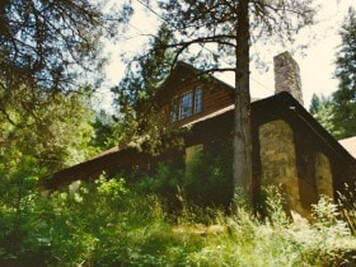 Logan's Canyon c.2011
Logan's Canyon c.2011
The site made national news in 1997, when a group of trespassing teens drawn by stories of haunting were confronted at the camp by three watchmen, who herded them into an empty swimming pool, tied them up and threatened them with shotguns until police arrived. The resulting court trial for the guards caused an uproar in Logan that was widely documented in area newspapers.
In 2006, it was placed on the National Register of Historic Places, and as of 2014, the property is under new ownership.
Sitting just above the Logan River, what is left are two small cabins, one which housed the camp’s maids, a larger cottage, a generator shed, a playhouse and the main cabin which due to its screened in porch was used as the dining hall. East of these buildings are two guest houses, a storage shed and a lodge. The stone stairs and walkways were completed by out-of-work masons during the Great Depression. Next to the two story pool house and laundry is the infamous swimming pool. At one time there were horse stables, and an outdoor amphitheater as well as an indoor theater with its own ticket booth which could seat 24 people.
In 2006, it was placed on the National Register of Historic Places, and as of 2014, the property is under new ownership.
Sitting just above the Logan River, what is left are two small cabins, one which housed the camp’s maids, a larger cottage, a generator shed, a playhouse and the main cabin which due to its screened in porch was used as the dining hall. East of these buildings are two guest houses, a storage shed and a lodge. The stone stairs and walkways were completed by out-of-work masons during the Great Depression. Next to the two story pool house and laundry is the infamous swimming pool. At one time there were horse stables, and an outdoor amphitheater as well as an indoor theater with its own ticket booth which could seat 24 people.
Ghost Reveal... Not the Usual Suspects
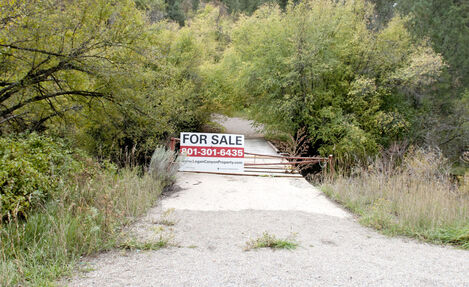 Entrance to St. Ann's Retreat along U.S. 89
Entrance to St. Ann's Retreat along U.S. 89
All the stories of ghosts or spooky feelings at St. Anne’s Retreat are always involving nuns, but in truth they were the ones that spent the least amount of time there. They were sent sporadically after 1959, when the Catholic Church took over the camp, and it’s difficult to believe that no other haunting, residual or intelligent have ever been reported, even before the sisters came to the retreat.
By the time the nuns arrived, this piece of land was actively in use for almost 50 years. If there were any misdeeds that occurred here, celebrities and politicians were the masters of hushing up anything from being disclosed to the public. Remember one of the most powerful families in the area were their host, which could add an extra layer of secrecy to any event that took place, and which would have embarrassed those involved. These families, whether it was the Hatches or a guest, traveled with a retinue of servants, cooks, nannies etc., which had their own dramas in their personal lives. If their patrons had good reason to keep secrets to save face with society, they were just as motivated in order to keep their jobs.
One of the important reasons to cast doubt on the veracity of the nuns haunting this compound, is the Sisters of the Holy Cross have a very distinctive head veil, and none of the witnesses have made mention of this.
By the time the nuns arrived, this piece of land was actively in use for almost 50 years. If there were any misdeeds that occurred here, celebrities and politicians were the masters of hushing up anything from being disclosed to the public. Remember one of the most powerful families in the area were their host, which could add an extra layer of secrecy to any event that took place, and which would have embarrassed those involved. These families, whether it was the Hatches or a guest, traveled with a retinue of servants, cooks, nannies etc., which had their own dramas in their personal lives. If their patrons had good reason to keep secrets to save face with society, they were just as motivated in order to keep their jobs.
One of the important reasons to cast doubt on the veracity of the nuns haunting this compound, is the Sisters of the Holy Cross have a very distinctive head veil, and none of the witnesses have made mention of this.
Violent and unexpected death came to this area of Logan Canyon, long before it was known as St. Anne’s Retreat. Entities many times will show up in an area close to where they lost their lives or where violence was committed against them. These are just a few of the earliest examples.
 Tanya Weber murdered in 1965
Tanya Weber murdered in 1965
July 1965 – On June 26th, the partially nude body of 17 year old Tanya Weber was found about ½ block from her home. She had been strangled to death. Suspect Owen Kimball was found 3 days later dead in his truck in Logan Canyon. He had committed suicide by carbon monoxide inhalation. He was the father of 2 & had told his wife he was going to get some bait.
 Tiffany Britt Jarmon
Tiffany Britt Jarmon
Tiffany Britt Jarmon’s body was found in November 2008, where it had been dumped near the Birch Glen summer home area in Logan Canyon. A fisherman found her body approximately 10 days after her death. She was shot in the back of the head. Four months later, police arrested Robert Ferretti, her ex-boyfriend and prosecutors charged him with homicide, a first-degree felony. Jarmon had led a troubled life plagued with drug addiction. He was convicted with the help of DNA evidence, and was sentenced to 15 years to life in Utah State Prison.
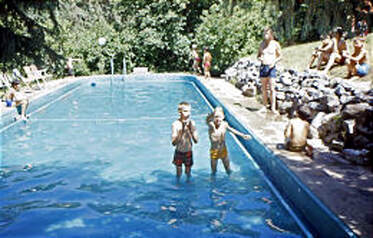 St Ann's Retreat pool area when it was youth camp c.1980s
St Ann's Retreat pool area when it was youth camp c.1980s
Finally, another source of paranormal events can be tied to the Shoshone Tribes which lived in this area. Their burial rites were to wrap the body and leave it in a cave or cleft in a rocky area. It is unknown if any of their burial sites might have been disturbed during all these years.
In a wilderness setting is the possible effect of elemental spirits that have been on the land for hundreds, possibly thousands of years. Native Americans are possibly the ones who understand the nature of elemental spirits the best. The best and safest relationship for human with elementals is not to catch their attention, and you would do this by a small ritual of appeasement if you were going to do something on the land, like for instance building cabins, digging into the earth for wells, cutting down trees and then do not invoke them again. It's very doubtful that any of this was done since human occupation of this area of Logan Canyon, or when the encampment was slowly constructed and augmented over the years.
There is a very good chance that there is paranormal activity occurring there, however almost certainly the source is not these poor sisters, but more than likely any of the numerous people who have lost their lives in and around this compound. All the legend-trippers which have come looking for phantom nuns have probably overlooked ghostly entities, EVPs and proof of the paranormal which is absolutely more interesting than an urban myth.
The question begs to be asked, what or whom walks among the cool forested paths of St. Ann's Retreat?
In a wilderness setting is the possible effect of elemental spirits that have been on the land for hundreds, possibly thousands of years. Native Americans are possibly the ones who understand the nature of elemental spirits the best. The best and safest relationship for human with elementals is not to catch their attention, and you would do this by a small ritual of appeasement if you were going to do something on the land, like for instance building cabins, digging into the earth for wells, cutting down trees and then do not invoke them again. It's very doubtful that any of this was done since human occupation of this area of Logan Canyon, or when the encampment was slowly constructed and augmented over the years.
There is a very good chance that there is paranormal activity occurring there, however almost certainly the source is not these poor sisters, but more than likely any of the numerous people who have lost their lives in and around this compound. All the legend-trippers which have come looking for phantom nuns have probably overlooked ghostly entities, EVPs and proof of the paranormal which is absolutely more interesting than an urban myth.
The question begs to be asked, what or whom walks among the cool forested paths of St. Ann's Retreat?
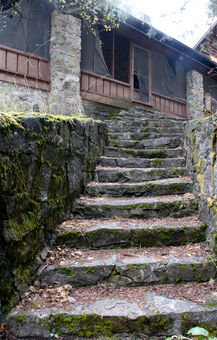 Stairway to the main lodge
Stairway to the main lodge
The collection of privately owned cabins known as the Nunnery, St. Anne’s Retreat or Hatch’s Camp is legally called Pine Glenn Cove.
The current property owner reports he is continually frustrated with expensive ongoing repairs as a result of vandalism on his property, which was placed on the National Registry of Historic Places in 2006.
As a result, any repairs to the structures must meet specific criteria to preserve its structural history — often requiring expensive custom work, he said. As a result, the Nunnery remains under surveillance and the owner says he will continue to seek prosecution of people who illegally enter or destroy his property.
In 2021, the property was listed for sale at $700,000.
The current property owner reports he is continually frustrated with expensive ongoing repairs as a result of vandalism on his property, which was placed on the National Registry of Historic Places in 2006.
As a result, any repairs to the structures must meet specific criteria to preserve its structural history — often requiring expensive custom work, he said. As a result, the Nunnery remains under surveillance and the owner says he will continue to seek prosecution of people who illegally enter or destroy his property.
In 2021, the property was listed for sale at $700,000.
